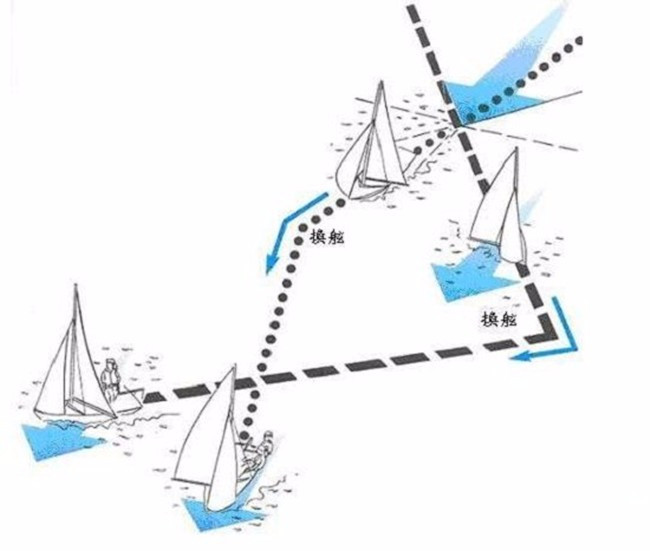In general, the operation of sailing in the wind is relatively simple compared to sailing in the wind, and it is one of the favorite driving methods for the flight crew.
Downwind
When the sailboat is sailing downwind, the sailboat only pushes the wind forward. At this time, the aviator should put the sails out as far as possible in order to obtain the maximum frontal area. In the smooth winds, changing the windy sail surface from one side of the sailboat to the other is called a “wind down changeâ€.
Windsurfing VS Downwind Convert
When operating "wind change", the helmsman pushes the tiller so that the stern moves through the "forbidden zone."
In the operation of "wind downs", the helmsman is pulling the rudder, so that the sailboat is biased away from the wind and passes through the wind eyes (the direction of the wind).
Whether it is "wind down change" or "wind change" is to change the sail from one side of the boat to the other.
A standard "downstream" process is as follows:
1. The helmsman and aviators look around to ensure the safety of the ship and the crew in the process of changing the ship.
2. The helmsman shouted "ready togybe"; the helmsman determined the direction of the wind and chose the particular scene on the shore as a reference.

3. If the flight crew is ready, call "ready".
4. The helmsman gently pushes the tiller, the crew relaxes the front sail, and then the helmsman gradually draws in the main sail.
5. The helmsman tightens the mainsail control rope and the sail mast approaches the centerline of the sailboat and shouts "Gybe-ho".
6. The helmsman will exchange the hands that hold the tiller and the mainsail-guided sling, and pull the tiller to pass the mast to the midline of the sailboat. The helmsman and the crew quickly move through the midline of the sailboat.
7. The helmsman will return the tiller to the front and adjust the mainsail and control the sails. The crew will complete the front sail change operation and the sailboat will sail in the predetermined direction.
Editor's note: USSailing's original work considered that the operation of sailing in the wind was simpler than sailing in the wind; but in practice, although the body wind speed was weaker than the real wind and the inclination of the hull was relatively small, it was easy for the yacht beginner to over-relax their attention. The rudder effect is also poor when sailing in the wind, making the steering less sensitive. If the wind is swaying or gusts, there is a potential risk of losing control.
Especially when the wind is going downwind or on the big side, special attention should be paid to controlling the windward angle of the sail. Avoid the wind blowing from the sail trailing edge into the sail-by-the-lee, which may lead to accidental change of the sideboard etc. Mistakes.
The “wind down change†operation described in the original text is similar to that of S-Jibing. First, let the sailboat sail from a relatively downwind heading, slightly push a little rudder to a more heading heading, and induct the main sail into the near centerline of the boat, then pull the rudder. The stern slammed over the eyes to complete the changing action. Because the track of this operation method is S type, it is named. Only S-Jibing operation for beginners, the steps are a little more complicated, you can also omit the initial slightly heading course, while maintaining the original wind direction, directly tighten the mainsail, smashing the rudder, simply complete the downwind Replacement operation.
Saddle Rack ,Saddle Racks And Stands ,Saddle Stand,Saddle Pad Rack
NINGBO BRIGHT MAX CO., LTD. , https://www.smartrider-horsetacks.com